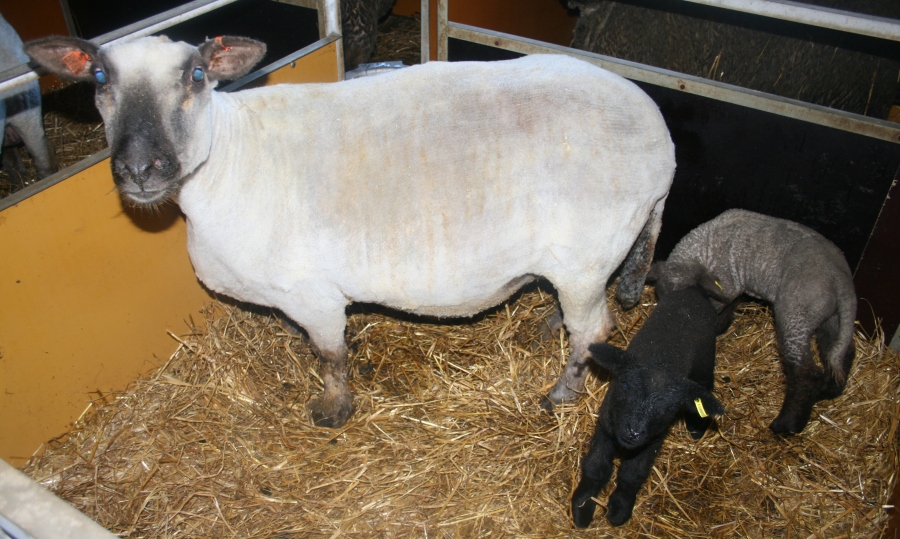Breeding
One healthy Oxford Down ram should be able to impregnate a flock of about 50 ewes within two heat cycles (about 6 weeks). Generally, however, it is advisable to reduce the number of ewes to about 20-30 ewes per ram so that the ram will have an opportunity to mate with each ewe at the best stage of their heat cycle thus increasing the success rate. Oxford Down is not a suitable breed for around the year lambing due to poor pregnancy rates in the spring. The most natural tupping period is in september-november, and thus the lambs are born in march-april. If necessary, Oxford Down can be tupped until january-february with moderate results. Flushing is used to synchronise the heat cycle of the ewes so that it is not necessary to prolong the breeding period unnecessarily. Shearing also has an effect in synchronising the heat.
In our farm we join the rams with the ewes for about 4-6 weeks. Mating is monitored using ruddle painted on the front of the ram and the ‘marked’ ewes are listed daily to aid estimating the lambing time. This helps planning the lambing and the feeding before lambing. The ruddle colour is changed after three weeks (= one heat cycle) which helps monitoring the repeat mating.
It is important to keep an eye on the condition of the ram, especially if the flock of ewes is large. If necessary, the ram can be removed from the flock to a separate pen to rest and eat for a day or two as the most virile young rams easily forget to eat when surrounded by ewes.
Lambing
The Oxford Down ewes have very good mothering abilities and are quite independent in lambing. The first signs of lambing are that the ewe withdraws from the flock and scrapes indicating that the ewe is preparing ‘a nest’. The udder tightens and the vulvas swell and turn dark red, also the tail moves up. It is easier for the ewe to deliver if it has a sufficient space to move around during lambing. This is why we usually put the ewe to lambing pen only after the lambing. The lambing starts with the passing of the water bag. If the lamb is in its normal, so called ‘three point’ position it usually is born within 0.5-2 hours after passing of the water bag. If it takes longer it is necessary to check that the lamb is in the correct position, this is head and front legs first. Remember, however, that especially for the first time lambing the ewe will need more time.
If the lambing is not progressing despite the contractions or if the lamb is malpresented, it is necessary to help the ewe. When this is needed, take care of good hygiene and always act calmly, also calming the ewe. Once the lamb is born, the airways need to be opened by, for example, hanging the lamb from its hind legs and using tissue to clean the nostrils and mouth. As soon as possible the lamb should be given to the ewe to be mothered. The following lambs normally are delivered within the next half an hour, but it has happened in our farm that a healthy sibling is delivered a couple of hours after the first one.
Finally, it is important to clean and check the ewe’s udder and make sure that milk can be drawn from both teats. Once the ewe has cleaned the lambs and is ready to get on its feet again, it is a good time to move the ewe together with its lambs to their own pen and reward the ewe’s efforts by giving an extra portion of supplementary feed.

